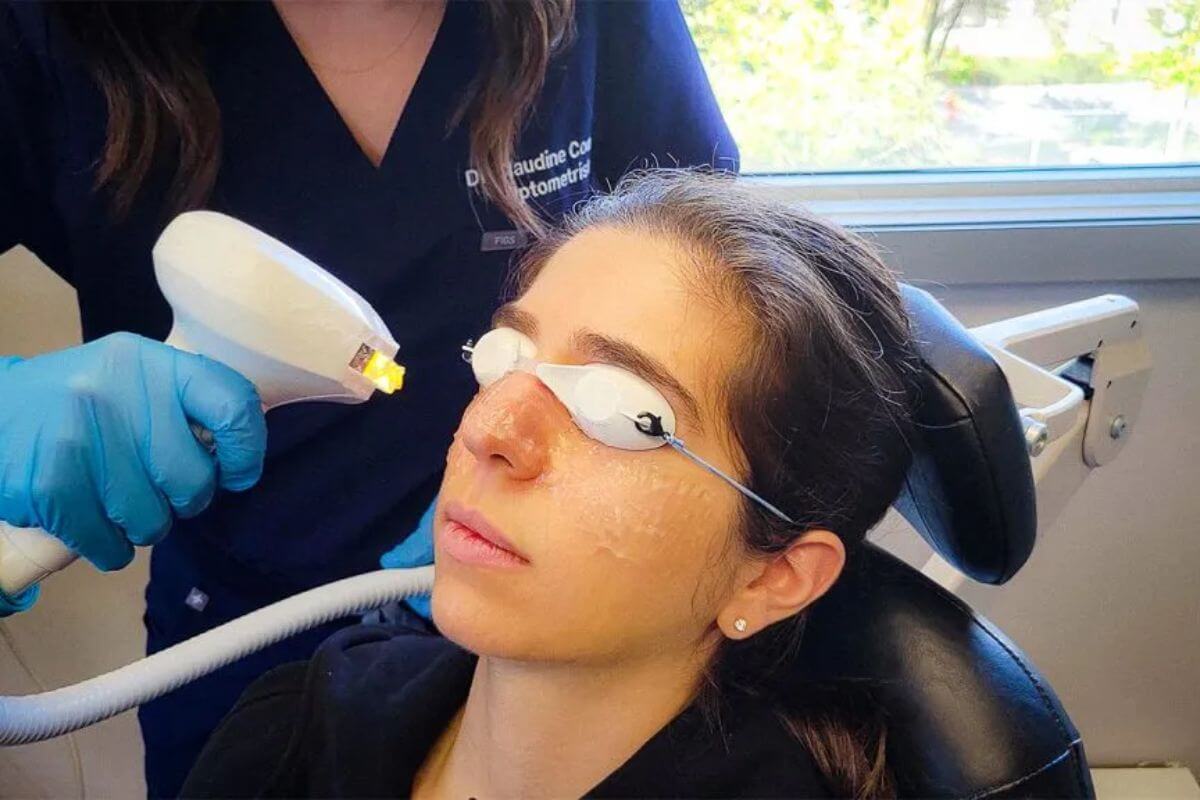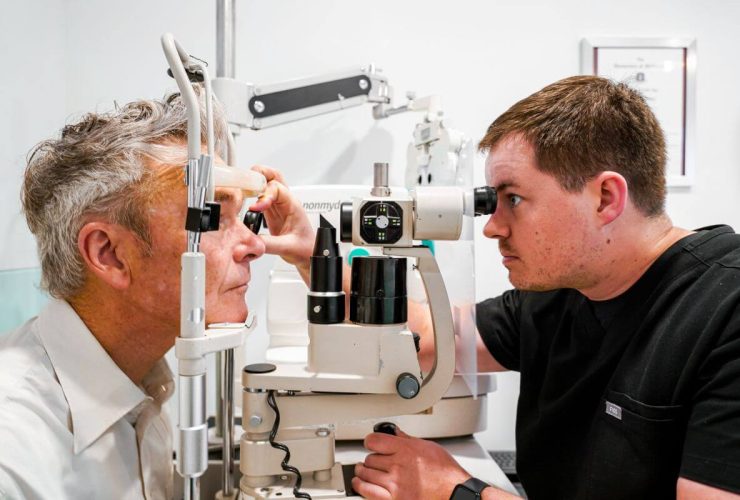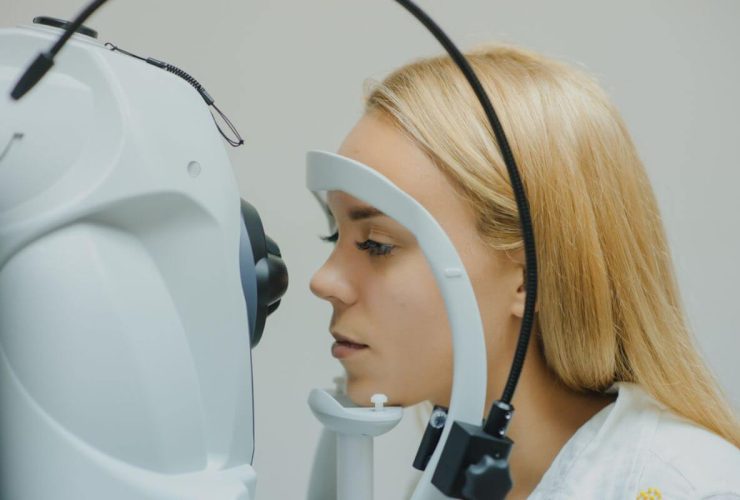What Does an IPL Dry Eye Treatment Session Involve? Step-by-Step Guide
For many people, dry, itchy, and irritated eyes are more than just an occasional discomfort—they’re a daily struggle. Traditional treatments like eye drops and warm compresses can provide temporary relief, but they often don’t address the root cause of the problem. That’s where IPL Dry Eye Treatment comes in.
Intense Pulsed Light (IPL) therapy is a modern, clinically proven solution that targets one of the leading causes of dry eye disease: meibomian gland dysfunction (MGD). By restoring the natural function of these oil glands, IPL therapy helps improve tear quality and provides lasting relief.
If you’ve been considering the treatment but aren’t sure what to expect, this step-by-step guide breaks down everything that happens during an IPL session—from your initial consultation to post-treatment care.
Step 1: Understanding the Basics – What Is IPL Dry Eye Treatment?
Before diving into the process, it helps to understand what Intense Pulse Light Dry Eye Treatment actually does. IPL, or Intense Pulsed Light, is a technology originally developed for dermatology to treat conditions like rosacea and sun damage. Eye specialists soon noticed that patients who received IPL for facial skin concerns also reported improvement in dry eye symptoms.
The reason lies in the treatment’s effect on the tiny meibomian glands located along the eyelids. These glands produce oils that keep tears from evaporating too quickly. When they become clogged or inflamed—a condition known as Meibomian Gland Dysfunction (MGD)—the result is dryness, irritation, and inflammation.
IPL works by delivering controlled pulses of light to the skin around the eyes. The light targets abnormal blood vessels and reduces inflammation, helping the glands work properly again. Over time, this restores a healthier tear film and reduces the burning, stinging, and redness associated with chronic dry eye.
Step 2: The Consultation – Evaluating Your Eyes and Tear Health
Every IPL treatment begins with a thorough dry eye consultation. This step is essential for understanding the cause of your symptoms and confirming whether IPL is the right solution.
During the consultation, your optometrist or ophthalmologist will:
- Review your medical and eye history. They’ll ask about symptoms, previous treatments, medications, and any underlying conditions.
- Conduct a digital eye assessment. Many clinics use advanced diagnostic tools to map tear quality, gland health, and ocular surface condition. This may include imaging tests like meibography, which captures detailed images of your meibomian glands.
- Perform a tear breakup time test. This checks how quickly your tears evaporate.
- Measure inflammation or redness levels. Some clinics also assess bacterial load or Demodex mite presence, as both can worsen dry eye symptoms.
The consultation helps rule out other causes of dryness (such as autoimmune conditions or medication side effects) and ensures IPL will be safe and effective for you.
If you’re a suitable candidate, the optometrist will explain the treatment plan, including how many sessions you’ll need—typically four sessions spaced two to four weeks apart.
Step 3: Preparing for the Session – What to Do Before IPL Treatment
Preparation for IPL Dry Eye Treatment is simple but important to ensure safety and effectiveness. Here’s what patients are generally advised to do:
- Avoid sun exposure for at least a week before your session. IPL works by targeting pigment and blood vessels, so tanned or sunburned skin can increase the risk of irritation.
- Discontinue certain skincare products, such as retinoids or exfoliating acids, a few days before treatment.
- Remove makeup and skincare from your face before the appointment. The treatment area must be clean and free from lotions or oils.
- Avoid self-tanning products and refrain from wearing contact lenses during the procedure.
Your clinician will provide clear pre-treatment instructions specific to your skin type and eye condition.
Step 4: The IPL Procedure – What Happens During Treatment
The treatment itself is quick, non-invasive, and usually completed within 20 to 30 minutes. While exact techniques can vary slightly between clinics, here’s a typical breakdown of what happens during an IPL Dry Eye Treatment session:
1. Protection and Preparation
You’ll be seated comfortably in a treatment chair. The clinician will place protective eye shields or goggles over your eyes to block the light flashes. A cooling gel is applied to the skin around your eyelids and upper cheeks—this helps the light pulses distribute evenly and keeps the skin comfortable.
2. Light Pulses Are Applied
Using a handheld IPL device, the clinician delivers a series of light pulses to the skin just below your eyes and along the lower eyelids. The light energy gently penetrates the skin, targeting abnormal blood vessels and reducing inflammation that contributes to gland blockage.
You may feel a mild snapping or warm sensation during the pulses, similar to the flick of an elastic band. Most patients find the treatment tolerable, and no anesthesia is needed.
3. Gland Expression
After the light treatment, many specialists perform a meibomian gland expression. This step involves gently pressing along the eyelid margins to clear any clogged oil glands. It may feel slightly uncomfortable, but it’s a crucial part of restoring proper gland function.
4. Cooling and Recovery
Once the session is complete, the gel is removed, and a soothing lotion or cold compress may be applied. You can typically return to normal activities right after the procedure, though your skin may appear slightly red or warm for a few hours.
Step 5: Aftercare and Recovery – What to Expect Post-Treatment
Post-treatment care is straightforward, but following your clinician’s advice ensures the best results and reduces any risk of irritation.
Here’s what most patients experience and should keep in mind after IPL therapy:
- Mild redness or warmth is normal and typically fades within a few hours.
- Avoid direct sunlight and wear sunscreen to protect treated skin for at least 48 hours.
- Skip makeup and harsh skincare for 24 hours.
- Do not rub or touch the treated area excessively.
Your doctor may recommend using artificial tears or anti-inflammatory drops to support healing and comfort in the days following your session.
Some patients notice an improvement after the first treatment, while others start seeing results after two or three sessions. The effects are cumulative—each session builds on the previous one, improving oil flow and tear stability over time.
Step 6: Results and Long-Term Benefits
The goal of IPL Dry Eye Treatment is to restore the natural function of the meibomian glands and reduce chronic inflammation around the eyelids. When done correctly and consistently, patients often report:
- Reduced dryness, burning, and irritation
- Less dependence on artificial tears
- Clearer vision and reduced eye fatigue
- Improved comfort when using digital devices
- Healthier-looking skin around the eyes (as a bonus effect)
Clinical studies have shown that IPL not only improves tear film quality but also helps reduce bacterial buildup and Demodex mites, both of which can worsen dry eye symptoms.
For long-term results, most clinicians recommend a maintenance session every 6 to 12 months after completing the initial treatment cycle.
Step 7: Who Can Benefit Most from IPL Dry Eye Treatment?
While IPL is highly effective for many people, it’s not suitable for everyone. The best candidates typically include those who:
- Suffer from Meibomian Gland Dysfunction (MGD)
- Experience chronic dry eye unresponsive to traditional treatments
- Have rosacea or facial redness that contributes to eye inflammation
- Want a non-invasive, drug-free option for long-term relief
However, IPL is usually not recommended for individuals with very dark skin tones, those on photosensitive medications, or anyone with certain eye or skin conditions. A qualified optometrist or ophthalmologist will evaluate all these factors during the consultation.
Step 8: Why Professional Expertise Matters
Although IPL systems are used in various aesthetic and dermatology clinics, it’s crucial to have this treatment done by an eye care professional experienced in ocular health.
Eye specialists not only understand the delicate structure of the eyelids but also use specialized filters and protocols tailored for ocular use. They can accurately diagnose gland conditions, adjust treatment intensity, and combine IPL with other dry eye therapies—such as LipiFlow, BlephEx, or omega-3 supplements—for comprehensive results.
Choosing the right clinic ensures both safety and effectiveness, minimizing the risk of complications and maximizing comfort.
Conclusion: Clearer, More Comfortable Eyes Start Here
Chronic dry eye can impact every part of daily life, from reading and driving to simply enjoying a sunny day outdoors. IPL Dry Eye Treatment offers a proven, lasting way to address the root cause rather than just the symptoms.
By following a carefully planned treatment pathway—starting with a professional consultation, continuing through a series of precise light sessions, and maintaining good eye hygiene afterward—patients can achieve significant and long-term relief.
If dry, irritated eyes are holding you back, it may be time to consider IPL therapy. Schedule a dry eye consultation with an experienced optometrist to see if this treatment is right for you. With the right care and technology, lasting comfort is within reach.




